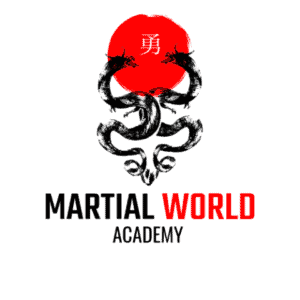With action starts like Bruce Lee, Jean-Claude Van Damme, and Jason Statham around a person can be forgiven for wondering if all one need to get in the best shape of their life is an endless stream of bad guys to beat up. Or, in other words, “Is karate a good workout?“
As a rule, joining a martial arts dojo is one of the best things you can do to get in shape. You get a full body workout, great cardio, increased flexibility, increased strength, and a score of mental benefits as well.
So now you need to go get fitted for your white belt, right? Well, not so fast. Keep reading and find out exactly how you can sculpt your body into a sexier fighting machine.
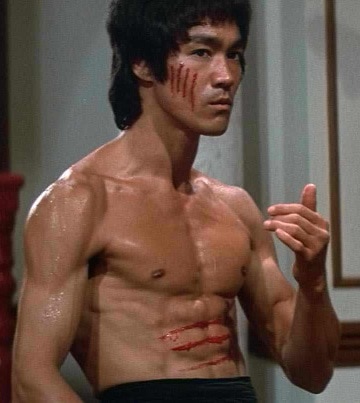
Dojo vs. Dojo
The first thing that has to be pointed out is the obvious: not all martial arts are going to give you an equal work out. Neither Tai Chin or Kyudo, while still possessing many benefits in their own rights, aren’t likely to get your pulse rate up high enough to count as a “work out”. So if you want martial arts to be your vehicle for fitness, make sure you’re training in a style that pushes you physically, such as Karate, Muay Thai, Krav Maga, Taekwondo, or wrestling.
The second thing that needs to be pointed out is that not all dojos of the same style are going to give you a equal workout either. You might be in a Karate dojo, but if the sensei emphasizes the spiritual aspects of the martial art then you might not be getting the workout you desire. Talk with the sensei and ask what he stresses in the training of his students.
One more thing… In our baby-soft, feelings-centered, offense-driven, cancel culture society this might raise a few pitchforks, but it has to be said: if you are training for fitness, don’t take lessons from a fat sensei. He might very well be the baddest man on the planet, able to take down the entire Gracie family with both hands tied behind his back, but if the coach is fat then he is a poor model for you to emulate if you’re trying to get in shape using Karate.
Now, with those pitfalls pointed out, lets talk a bit about why it is that styles like Karate are uniquely suited to helping you get into amazing shape.
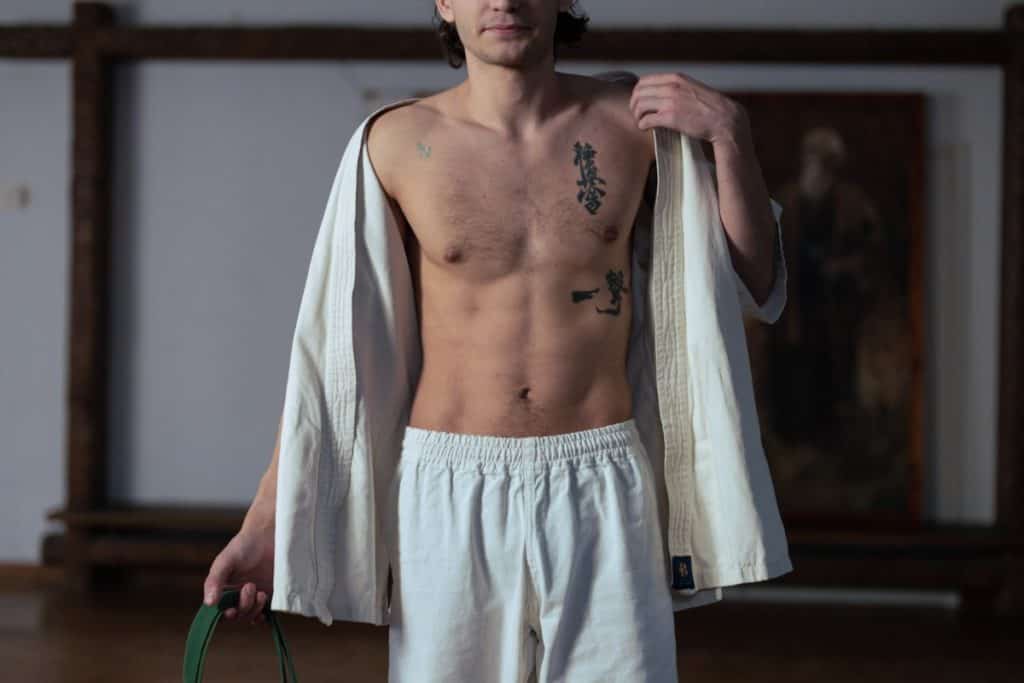
Cardio Benefits
In 2013, 2014, and 2015 I participated in the Tough Mudder obstacle race. It’s one of those endurance events where you run for 10-12 miles and spaced throughout are obstacles that require you to scale a 10 foot wall, jump over fire, crawl in mud beneath electrified wires, and plunge into a vat of ice water, etc. I did no extra training in preparation for this event aside from my usual Karate training.
So how did I do? Not bad, actually. I did run out of steam around mile 8 and for the remaining 4 miles had to settle for a run-walk-run-walk-run pattern. But 8 miles of running, for a non-runner, I consider to be pretty damn good! And as for the obstacles, those weren’t a problem due to the intense full-body workout that my dojo training provided.
The point being made here is that Karate provided me with such a strong cardiovascular system that I was able to perform exceptionally well in an entirely different sport!
Mental & Psychological Benefits
It might sound odd to be looking at the brain when discussing the body, but a huge amount of research that has been coming out is showing us that exercise has a wealth of benefits for the brain and the mind too.
What kind of benefits can you expect from Karate training? In one study that found increased cognitive function, in another study they found increased self esteem among martial artists, it has been well known in the scientific literature that exercise (including martial arts) releases “feel good” hormones, which combat depression.
There are also social benefits to Karate training. If you’re anything like most adults, your circle of friends has dwindled as you’ve grown older. This, particularly for men, can leave an adult feeling isolated and can contribute to a host of health risks. But ask anyone who remembers when they joined their dojo and they’ll tell you that by the end of the first week they had half a dozen new friends.
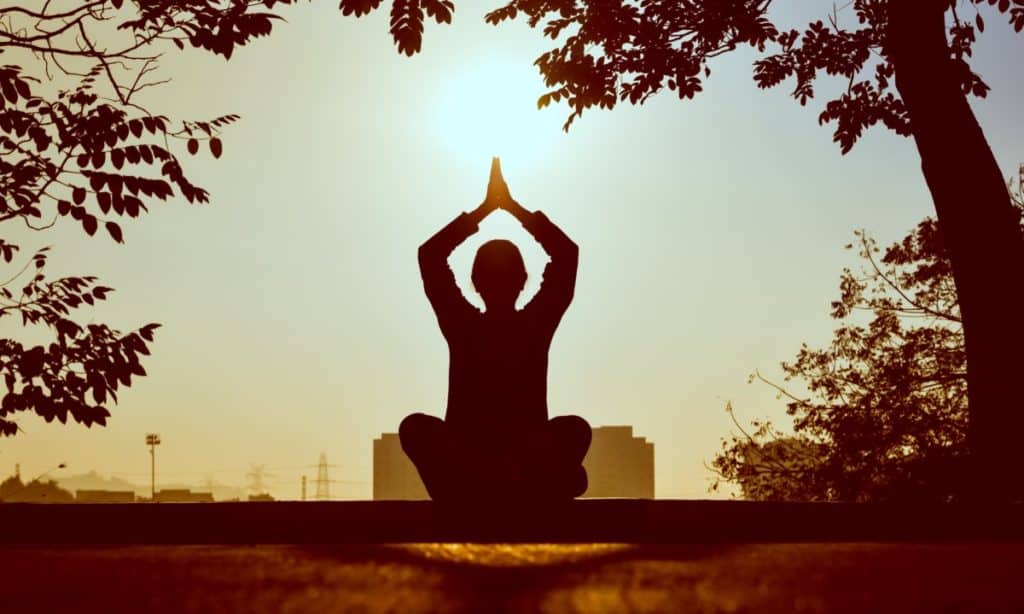
Fun Factor
This is something people often overlook when it comes to working out: it needs to be fun! Why is that important? Because we don’t get strong from just a single day of pushups; we have to keep at it for weeks and weeks before we see results. So if you’re currently training in something you hate, or find boring and repetitive, odds are good you’re going to quit before the results show up!
Karate, and almost every martial art, has conquered this problem (unless you have a weird sensei that just LOVES endless punch drills from shiko daichi (horse stance)). There is just so much variety to the training that you almost can’t get bored. Ten or so kata to learn, practice, and analyze, dozens and dozens of individual punches, kicks, blocks, throws, submissions, and then there is the kumite (sparring). Nothing is more fun than squaring up with your dojo buddy and surprising him with something you’ve been working on in secret.
You can spend a year, a decade, or your whole life having fun with your Karate training and that enjoyment is going to help keep you coming back week after week. That consistency is what will give you the benefits of a great work out.
If you want to learn more about the hidden benefits of martial arts, try this other article I wrote here!
Is Karate Better than the Gym
The real question is: better for what? Put another way… “What is your fitness goal specifically?” Just lose weight? Get “ripped”? Etc?
If you are simply looking for a fun and engaging way to burn fat, lose weight, and enjoy some camaraderie, then karate is far better than lifting weights alone in the gym. Karate will also make you more flexible and help reduce stress, too!
But, getting back to the movie stars mentioned in the beginning of this article, will Karate alone (or any other martial art) give you the body of Hollywood stars like Bruce Lee?
NO.
Plain and simple, no. Firstly, Hollywood bodies aren’t necessarily all that healthy or strong. Sure they look great on camera, but that is as far as it goes in most cases. But more to the point, getting that muscle definition and 6-pack abs we all covet is more a byproduct of a diet plan than a workout plan. This is the dirty little secret of the fitness industry and it cannot be overstated: you cannot out-run the fork.
But let’s say you got your diet on lock. You zeroed in your macros and you have your caloric deficit plan in place to eventually leave you with less fat on you than a carrot. Will Karate get you be ready for the obligatory “shirtless scene” in your inevitable superhero movie?
Yes…and no.
See, the typical kind of Karate training you’ll find at most dojos isn’t focused on developing strength. They instead want to help you with things like techniques, timing, distance management, etc. Now, building strength will be a byproduct of this training, but it won’t be focused on the hypertrophy required to make your muscles especially large.
Generally speaking, if you are a martial artist and you want big muscles, then dojo training isn’t enough. You will need to incorporate a weight lifting regimen to supplement your martial training. If you are over 35, however, you will need to be careful about over-training.

The Plan
Before we get into the nuts and bolts of the training plan, let it be said that I am no certified trainer. And it must also be acknowledged that no plan is going to satisfy everyone because everyone has different goals.
So what does this plan set out to achieve? I’ve developed this regimen to support Karate training, rather than take its place. So that means that everything else plays second fiddle to dojo time.
You will also need to customize this plan in order to fit your own goals and tastes. For example, my hips are notoriously tight and it really affects my sparring. So, under the advice of my wife, I began incorporating certain yoga stretches to improve my hip flexibility.
You will do the same thing: identify your own goal(s) and modify this plan to achieve them.
Now, let me make a few assumptions about you and what you’re trying to achieve. I’m assuming you’re an adult in at least “okay” health, who is already training in Karate (and you love it!) but you also want to look buffer, hotter, you want certain muscles on your body to “pop”, like you belong in a movie with a big red cape behind you (don’t be embarrassed, we’ve all pictured ourselves like this, too).
Okay, so here’s the plan…
Monday
| Karate Training | 1 hour |
| Flexibility/Yoga (Targeted) | 15min |
You might be asking yourself why include additional flexibility training after you’ve already stretched during Karate. The answer is your tight spots might not be the same as your sensei’s tight spots, so you need to address them yourself. You’ll also notice that flexibility training is scheduled AFTER Karate practice. This is for 2 reasons:
- You always want to prioritize your most important training.
- You will make better flexibility gains after your body has been warmed up by an hour of Karate training. It’s also a great “cool down” after an intense class.
Tuesday
| Weight Lifting | 1 hour |
| Flexibility/Yoga (Full body) | 30 min |
My preferred weight lifting program is called “Starting Strength” but you might use the “5×5” program instead, or something like P90x, CrossFit, etc. The point here is simply to employ a program that focuses on muscular development.
Wednesday
| Karate Training | 1 hour |
| Flexibility/Yoga (Targeted) | 15 min |
Once again you’ll be targeting your “tight spots”. You’ll also be looking to stretch out any soreness left over from the previous day’s weight training.
Thursday
| Weight Lifting | 1 hour |
| Flexibility/Yoga (Full body) | 30 min |
On weight lifting days you’ve noticed that I double the amount of flexibility training. This is because weight lifting, by its nature, can shorten your muscle fibers over time. This can negatively impact your Karate performance, so a full body flexibility session serves to combat this effect.
Friday
| Karate Training | 1 hour |
| Flexibility/Yoga (Targeted) | 15 min |
After a week like this you ought to be just about dying. Waking up sore and being exhausted all day. Don’t worry, your body will adapt and it will get easier.
Saturday
| Running | 30 min |
| Rest/Light Flexibility | All day |
“Running?! I hate running!” You don’t necessarily have to run for 30 minutes straight. Maybe you go for a nice walk instead, or you do a shorter session of sprints for that nice HIIT “after burn”. I include running because running is part of self defense. If some guy pulls a knife on you, or 3 guys are trying to beat your head in, it would be better if you have the endurance to leave them in the dust.
Sunday
| Rest/Light Flexibility | All day |
On Saturday and Sunday you want to rest as intensely as you possibly can. You might do some light stretching to address some specific soreness, but you want to avoid as much strenuous activity as possible. Why? Because your body doesn’t get stronger from lifting… your body gets stronger from resting after lifting.
Nutrition
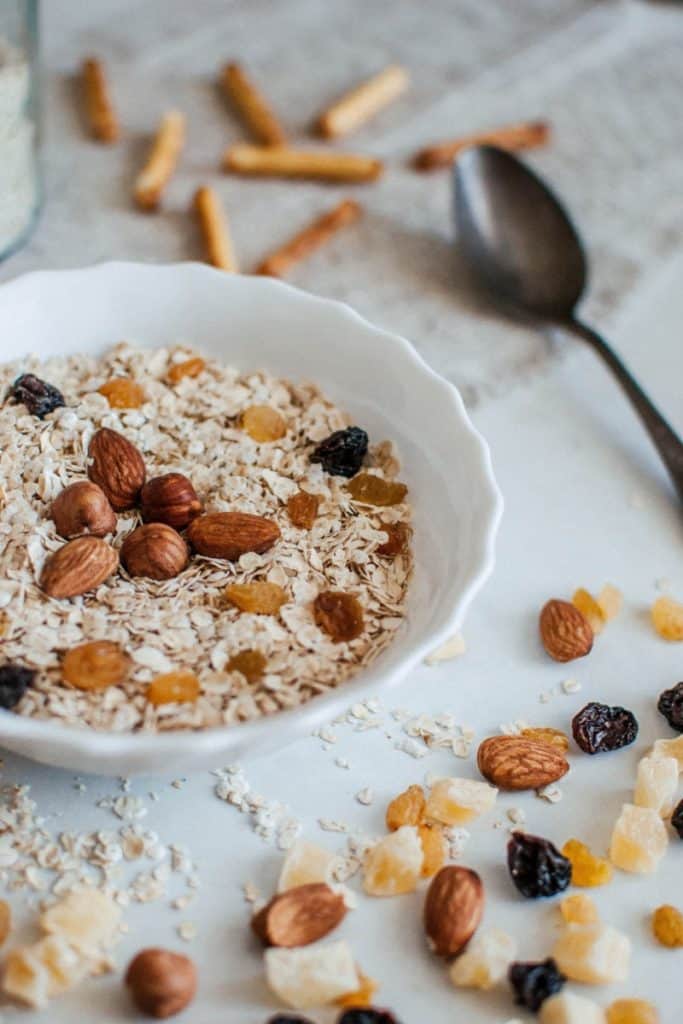
This article is already pretty long, so I hope you’ll forgive me for only providing a brief word on nutrition at this point (future article to address it more completely). You are going to need to become a very serious eater if you intend to employ this kind of 5-day training. You are going to be tearing down your body in order to allow it to build itself back stronger. But it cannot do that unless you are feeding it enough nutrition and in the proper quantities. Now, the nutrition plan you follow might be different, and I strongly encourage you to modify and experiment to fit your own needs, but here are a few tips to get you started:
- Get enough protein – There is some controversy to this advice, but most bodybuilders recommend 1 gram of protein per pound of lean body weight. There are a lot of guides out there to help you, but honestly I usually just keep it simple and use a protein shake for breakfast.
- Modify your carbs – Are you getting too much? Too little? There are tons of nutrition apps that can help you figure it out, but I like to listen to my body. I tweaked my carb intake until I started feeling like I had more energy during and after training. Interestingly, this meant that I didn’t so much reduce my carbs overall, but changed the days and times that I consumed more/less of them.
- Don’t be afraid of fats – Fear of fat was all the rage for decades and you still get so-called “experts” telling you to avoid fats. Are they calorie dense? Yup. Can too much make you fat? Oh yes. But are they also a necessary part of good nutrition. Definitely. Try using an app as you adjust and modify your diet in order to keep your fats in line.
- Go “au naturel” – One general rule that’s served me well is “The more man has changed it, the worse for me it is“. An apple is good for you. A fish is good for you. Apple pie is bad for you. Fish sticks are bad for you. Get it? The point here is to reduce processed foods as much as you can or eliminate them altogether.
Final Round
In summary, Karate training provides not only a great full-body workout which will help you build muscle, gain flexibility, and improve your heart, but it also will help your mental and emotional well-being, all while being way more fun than a treadmill or endless barbell curls.
And now you have a plan. So what are you waiting for?
Photo Attribution:
- Photo by Edgar Chaparro on Unsplash
- Bruce Lee, “Enter the Dragon”, Concord Production Inc., 1973
- https://www.pexels.com/photo/man-in-white-judo-uniform-with-open-shirt-8042002/
- Photo by Prasanth Inturi from Pexels: https://www.pexels.com/photo/silhouette-of-man-at-daytime-1051838/
- Photo by Jakob Owens on Unsplash
- Photo by Margarita Zueva on Unsplash
